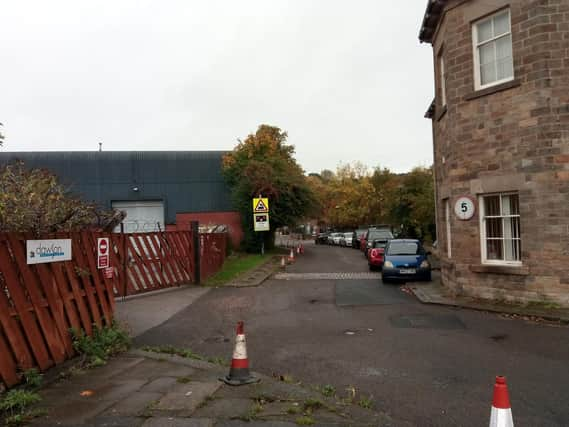Regeneration plans move forward with scheme to replace redundant industrial building


The metal clad building in Wath Road, Elsecar, stands alongside the village's heritage centre, which started life as colliery workshops for the Fitzwilliam estate, before being transferred to the National Coal Board.
As the workload extended, the existing factory was built as a store before being transferred to other use and was most recently in the hands of a catering supplies firm called Dawsons, before being left empty.
Advertisement
Hide AdAdvertisement
Hide AdIt was bought by Barnsley Council earlier this year and a planning application reveals the intention to eventually redevelop the site, with the anticipation of a scheme which would include start-up business units.
But in the immediate term, it is expected the whole site will be levelled and given a hard surface, to provide overspill parking for events at Elsecar Heritage Centre.
Parking in the village has become an increasing issue as the popularity of the centre, and other attractions, has grown in recent years, with one annual event '“ a VW meeting for motoring enthusiasts '“ being forced to find a new venue as a result of its increased popularity.
Elsecar is the focus of increased attention, having been given Heritage Action Zone status to allow better investigation of its role in the Industrial Revolution and the site is known to stand on part of a previous canal basin, having also been used for railway sidings in the past.
Advertisement
Hide AdAdvertisement
Hide AdA report on the project submitted with the planning application states: 'The site itself has high historical and archaeological significance.
'The east end of the site contains the buried remains of the first Elsecar canal basin (constructed in the 1790s) which was in-filled and redeveloped as railway sidings in the mid-19th century.
'The railway sidings themselves were a key part of the workshop complex, and there is potential for buried remains including rails and trackbeds to survive.
The site forms part of the setting for the Elsecar Newcomen Engine (a Scheduled Ancient Monument) which sits directly to the East, the former Elsecar Workshops/New Yard and rows of 18th and 19th century workers housing on Wath Road'“ the majority of which are Listed buildings.'
Advertisement
Hide AdAdvertisement
Hide AdWork to demolish the building would be done in a way to avoid damaging or exposing potential archaeology.
'Following demolition, the intention is for the site to be taken forward as a mixed-use development including provision for a number of start-up businesses as well as new amenity space,' the report states.
'However, detailed plans for this still need to be developed in consultation with key stakeholders.The site has a number of sensitivities that need to be taken into account, not least the need for any new development to contribute positively to the Elsecar Conservation Area, both in terms of architectural design and providing economic benefit to the local area.
'Initial positive discussions have been held with Historic England, as part of the Elsecar Project, around these sensitivities and the opportunities presented by future development in conjunction with emerging plans for the Elsecar Heritage Centre.
Advertisement
Hide AdAdvertisement
Hide Ad'These discussions will be continued with Historic England and other stakeholders over coming months. In the interim period, the site will be maintained and used for occasional overflow parking by the Elsecar Heritage Centre. Surfaces will be made good (using concrete to match the existing surface where necessary) including repair of any damage caused during the demolition.'
A decision on whether to approve the demolition will be made later.